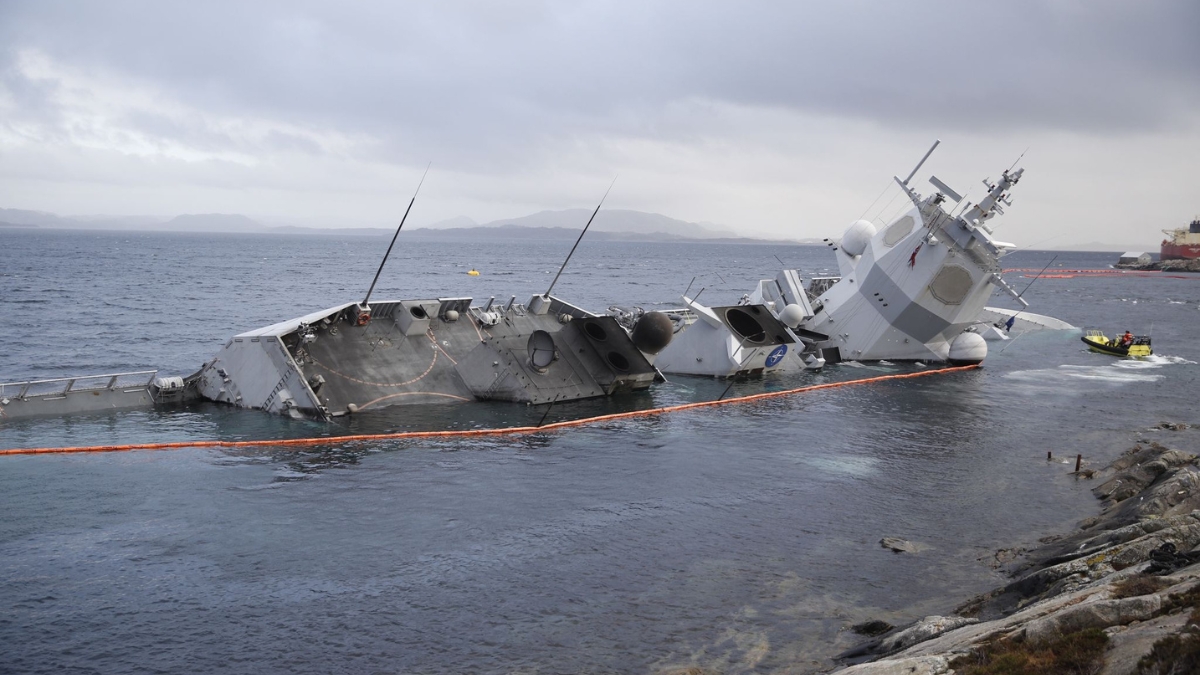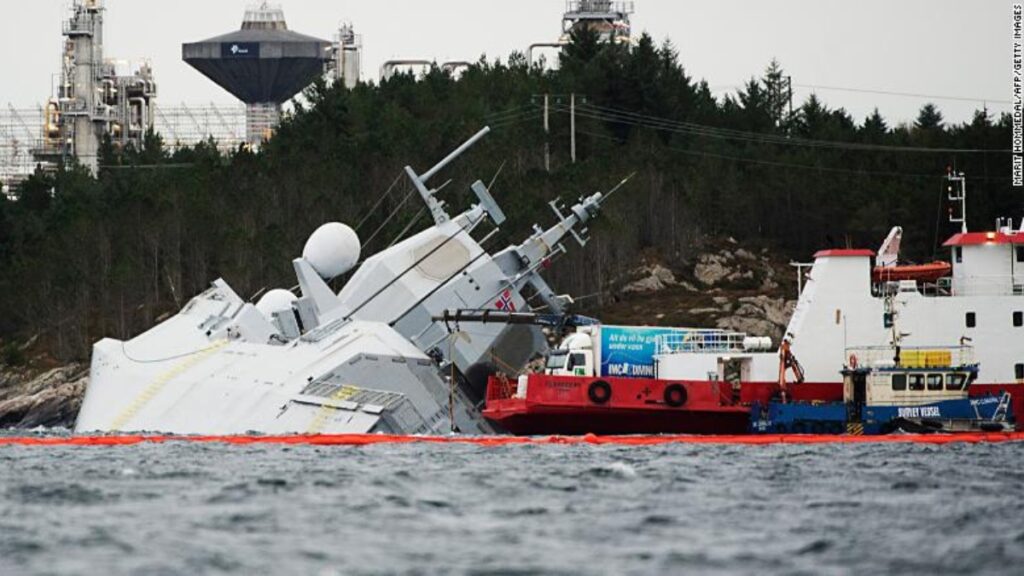Cargo Ship Crash Norway: NCL Salten Grounding Explained

Throughout the world, maritime safety experts are paying special attention to the Cargo Ship Crash of the cargo ship in Norway. The accident at the Salten grounding site in Norway led many to ask if maritime law and shipping industry policies were safe. What came from the incident was a new focus on important topics about cargo ship navigation, safety, and how it affects the environment. In this article, we will examine the facts of the crash, the investigation it received, and what wider impacts these incidents have on shipping.
Cargo Ship Crash Norway: A Disaster that Changed the Maritime Industry
When the NCL Salten crashed in Norway, the effect reached the entire shipping market. A major shipping route, the Trondheim Fjord, was blocked when the ship ran aground there. A set of unfortunate problems started the incident, which could have been stopped if proper safety measures had been in place. When the area was affected by the cargo ship, the Norwegian Coastal Administration immediately tried to control things to save more damage.
The experience of the NCL Salten grounding showed that navigating small and challenging fjords can be dangerous for cargo ships. Consequently, a reassessment of the safety guidelines for ships sailing in Norway has been undertaken.
A Look at How the NCL Salten Grounding Occurred
NCL Salten’s collision raises doubts about the dependability of existing navigation tools. Since the ship left its scheduled route, there was a collision with the rocky coast of Trondheim Fjord. The Cargo Ship Crash probe found some problems with the cargo ship’s navigation system that may have led to the problem.
Some are very concerned about the fact that the ship uses outdated navigation technology. Experts say that advanced systems likely would have stopped the error that resulted in the crash. Some also suspect that crew mistakes may have led to the incident.
What Happened After the Trondheim Fjord Accident
Following the accident in the Trondheim Fjord, the Norwegian Coastal Administration carried out a complete investigation into what went wrong. Investigators examine both the strike system of the vessel and the actions of those who operated it. The fact Cargo Ship Crash that the Baltnautic shipping company owns the NCL Salten has been called into doubt.
It was found that the ship’s use of a poorly adjusted navigation system may have led it away from its planned route. Both of these problems suggest that more maritime safety measures need to be adopted.
The Byneset Cargo Ship Incident: A Study Designed to Improve Maritime Safety
Just a few months before the NCL Salten accident, the Byneset cargo ship disaster showed that wrong navigation and insufficient crew training were both concerns. The Cargo Ship Crash at Byneset made people realize that it is important for crew members to be trained well and use technical navigation equipment.
These accidents highlight the need for making maritime safety procedures better and better. What is learned from these events should shape new rules and training for everyone working in the industry.
How the Norwegian Coastal Administration Operates
It is the Norwegian Coastal Administration that mainly looks after the security of the country’s waterways. The Norwegian government is facing increased demands to improve safety rules after the cargo ship crash. This accident has led the organization to examine its rules for ship navigation, controlling risks, and environmental safety.
The Norwegian Coastal Administration has set out safety measures for ships operating in the tricky Norwegian fjords. More rules for ships and the implementation of better technology for navigation aid in cutting accident risks.
Baltic Nautic Shipping Company and What It Must Do
Since the incident, Baltnautic, which operates the NCL Salten, has come under scrutiny. People have blamed the company for not keeping the ship’s navigation equipment up to standard. It has been questioned whether the company is ready to deal with such situations.
One part of the investigation includes looking at the company’s methods for maintaining ships and training crew members. If a shipping company is shown to be negligent, it can receive hefty penalties, suffer reputation losses, and see its business suffer.
The environmental results of the cargo ship crash in Norway
People are worried about the effect of the NCL Salten grounding on the Trondheim Fjord which is known for its pristine waters and could suffer pollution from spilled oil. Having hazardous goods in the ship’s cargo made it a serious danger to the local ecosystem. They have sounded the alarm about the possibility of continued harm to ocean animals and nearby ecosystems.
With many experts pointing out that stronger environmental protection laws are required, the Norwegian maritime safety rules have been under close review. Norway’s cargo ship crash makes it very clear that these ships can threaten the environment.
Safety and Rules for Norwegian Maritime Services
After NCL Salten ran aground, the government in Cargo Ship Crash has proposed looking into its maritime safety rules. We will concentrate on raising navigational standards, upgrading ship equipment and demanding that vessels comply with key safety standards. The crash has shown that existing regulations aren’t always adequate for navigating Norways fjords.
Lessons learned from this incident will be used to update Norwegian maritime law. Norwegian waters will require all shipping operators to take enhanced security steps to make sure an incident similar to the NCL Salten grounding never happens again.
The Future of Norwegian Fjord Waterways
Concerns about the safety of fjord shipping routes in Norway have been raised after the NCL Salten grounding. While these waterways are important for moving goods, they also put transportation at high risk of accidents. Because of this, people might suggest building different routes or improving what is already there to make voyages safer for ships.
Norwegian fjord shipping routes’ future relies on the findings of safety reviews and whether new regulations are implemented. If there are tougher rules for shipping companies, we may see improved safety in the industry later.
What Will Happen with Shipping Industry Safety Standards?
There is now more demand for the shipping industry, in Cargo Ship Crash and elsewhere, to increase its safety standards. The grounding of the NCL Salten has revealed that navigation and training could be improved in the industry. Actions should be taken by the shipping industry to stop accidents in advance by making sure vessels are properly outfitted and that crew members have skilled training.
The industry needs to place equal importance on bettering its technology and reducing its effect on the environment. It is clear from the NCL Salten event that shipping companies should try to limit their effects on the environment, because accidents can have major impacts.

Our learning point: The dangers revealed by the Norway cargo ship crash
The event in Norway showed that the maritime industry needs to improve its safety measures. As a result of the NCL Salten ship running aground, important topics include safe navigation, the role of the Cargo Ship Crash crew, and environmental safety. Investigations are going on, and as safety guidelines develop, the shipping business must learn from the situation to stop similar incidents from happening again.




